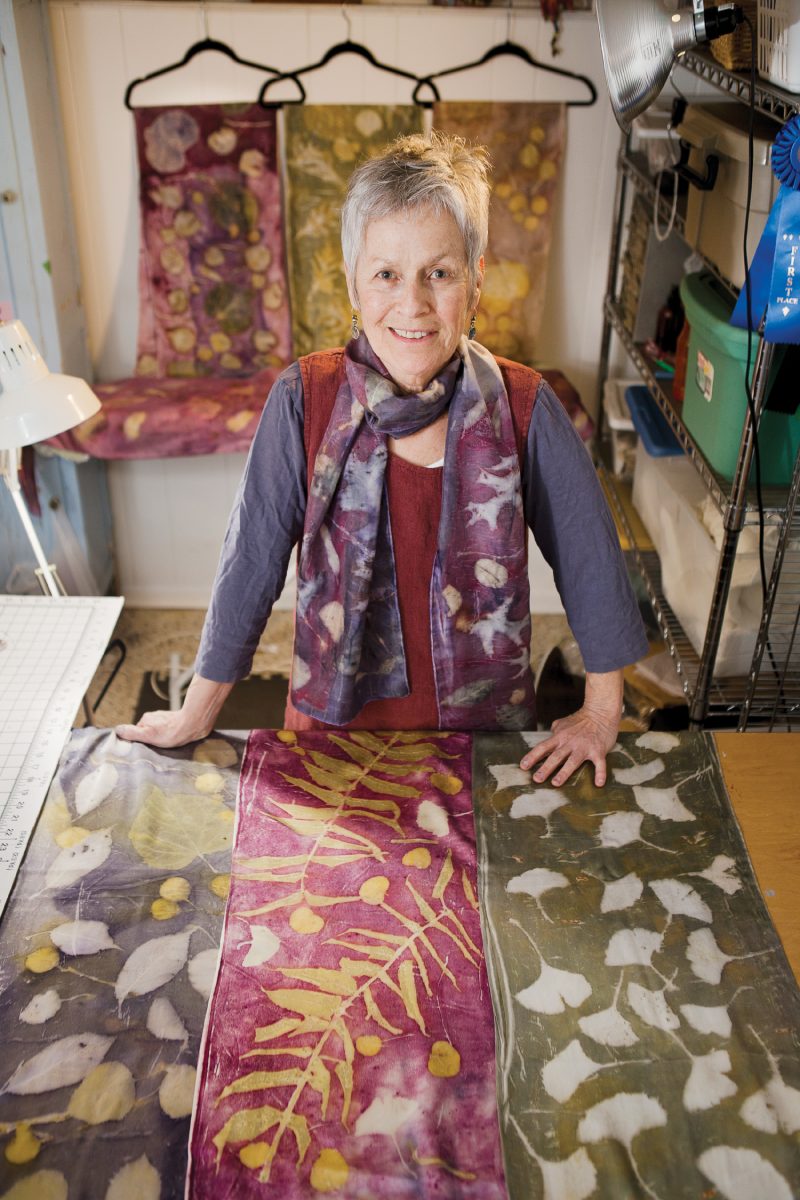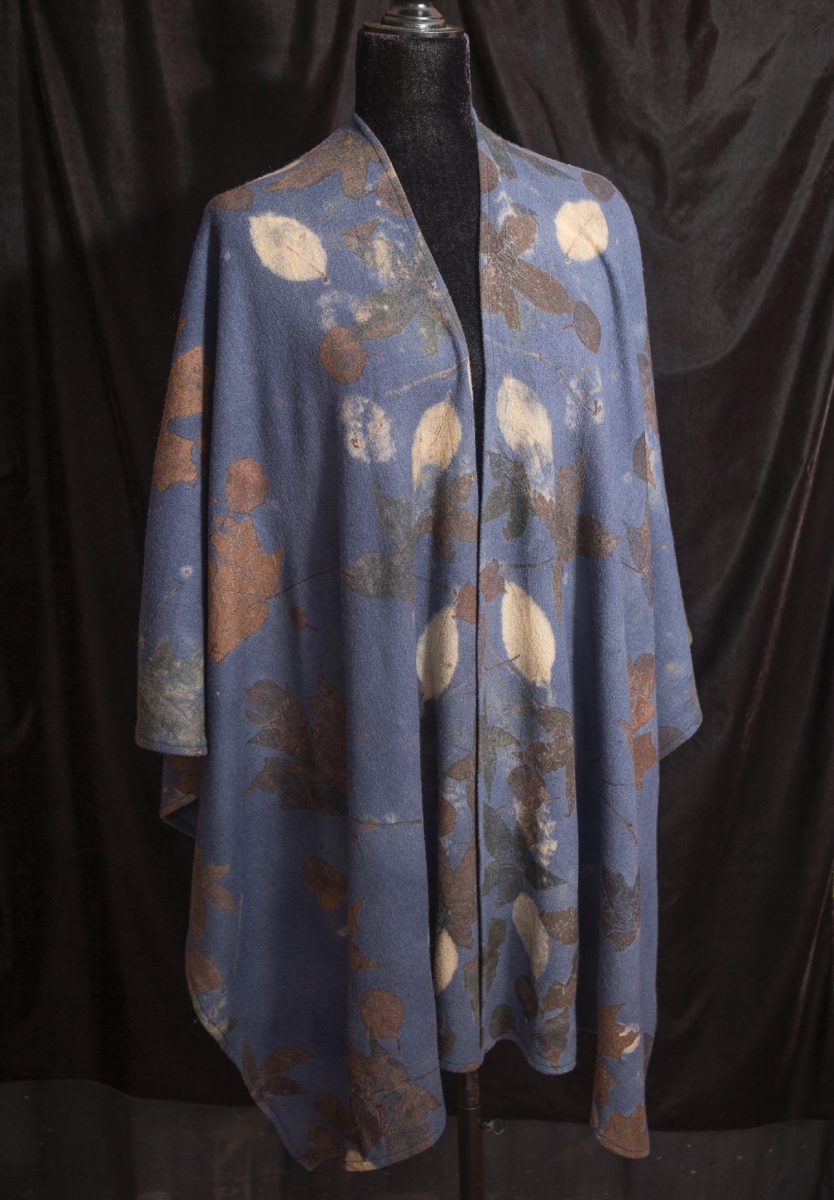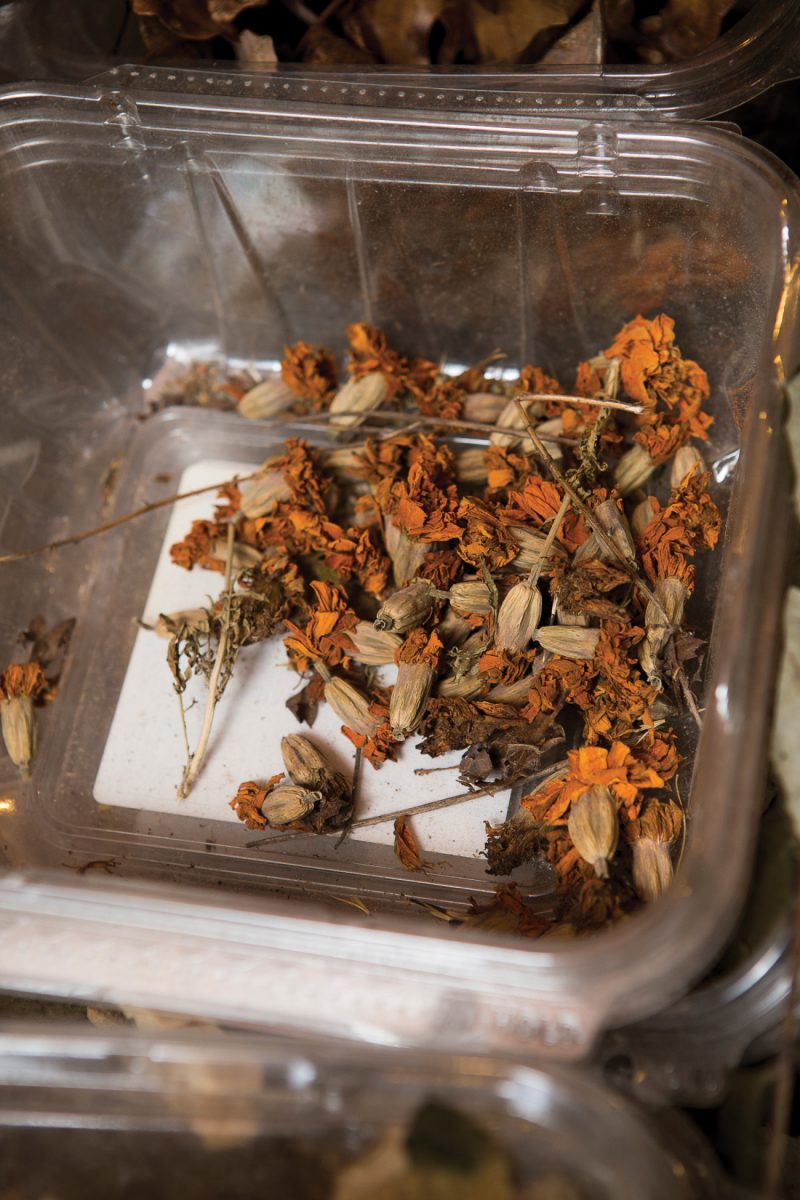
Photo by Matt Rose
Patricia Spangler has more than enough leaves in her life. “They’re everywhere. Our home has a two-car garage. It’s full of leaves. I open books, and dried leaves fall out. Find them stacked everywhere,” she says. Spangler collects these leaves to use in her eco-printing. She works primarily in silk and wool scarves, transferring patterns from nature into the cloth. It can take more than 100 leaves for one scarf alone. In each one, shimmering images of leaves, fronds, and blooms seem to rise to the surface of her works, captured as if on film.
In real life, the process is both simpler and more complex. Eco-printing is a form of direct-contact dying. After preparing the fabric to take color, Spangler rolls it up tightly with leaves she has foraged. She positions some of the leaves so that the tannins will transfer to the cloth, some flipped so that they will act as a resist. Then they go in a large pot to steam.

Photo by Matt Rose
The amount of iron in the bath will affect the hue, and Spangler may add even more iron by tossing in rusty nails or using an iron powder. She is expert at adding other colors, and knowing which leaves will remove color. In addition to the colors that the leaves themselves add, she has also become an expert at natural dying techniques. Sometimes she starts with a dyed cloth and sometimes she adds color during the steaming process.
For these colors, Spangler also turns to leaves and plants — everything from the purples of logwood to the russets of onion skin. Weld and indigo from her dye garden complete the rainbow. Spangler speaks passionately about using natural dyes, knowing how much industrial textile manufacturing impacts the environment. Teaching the art via her many workshops, she shares her mission: increasing artisans’ use of natural dyes on natural fabrics.

Over the years, Spangler has learned that each leaf’s colors can be predicted only so much, and that they change based on season, weather, and even where they were located on the tree: “To me it’s amazing that we can look at a tree and see the green leaves, but you can’t see what they’ll do, what’s inside of them.”
Her scarves and capes boast strong design elements, with the frills of geranium leaves or distinctive curves of gingkoes placed just so to form patterns that will show in the scarf — nature as it’s intended to be worn. Even given her expertise, there’s a certain amount of alchemy: “Every time you unwrap a bundle, it’s Christmas morning. Sometimes it’s not the present you wanted, but it’s always what it’s supposed to be.”
Patricia Spangler teaches two eco-printing workshops at Local Cloth (207 Coxe. Ave. #11) in April: “Intro to Ecoprinting,” 10am-4pm on Saturday, April 13, and “Ecoprinting: The Next Generation,” 10am-4pm on Saturday, April 20 (localcloth.wildapricot.org). She also teaches a workshop on Tuesday, June 11, 10am-4pm at the North Carolina Arboretum (100 Frederick Law Olmsted Way, ncarboretum.org) and on Friday, June 28, 12-5pm, at Purple Crayon (9 Old Burnsville Road, purplecrayonavl.com). Spangler sells her work at The Asheville Emporium (35 Wall St.); at Artisans on Main (14 North Main St., Weaverville, Artisans on Main on Facebook); and at The Mountain Nest Gallery (133 Cherry St., Black Mountain, mtnnest.com). For more information, visit thelanguageofleaves.com.
